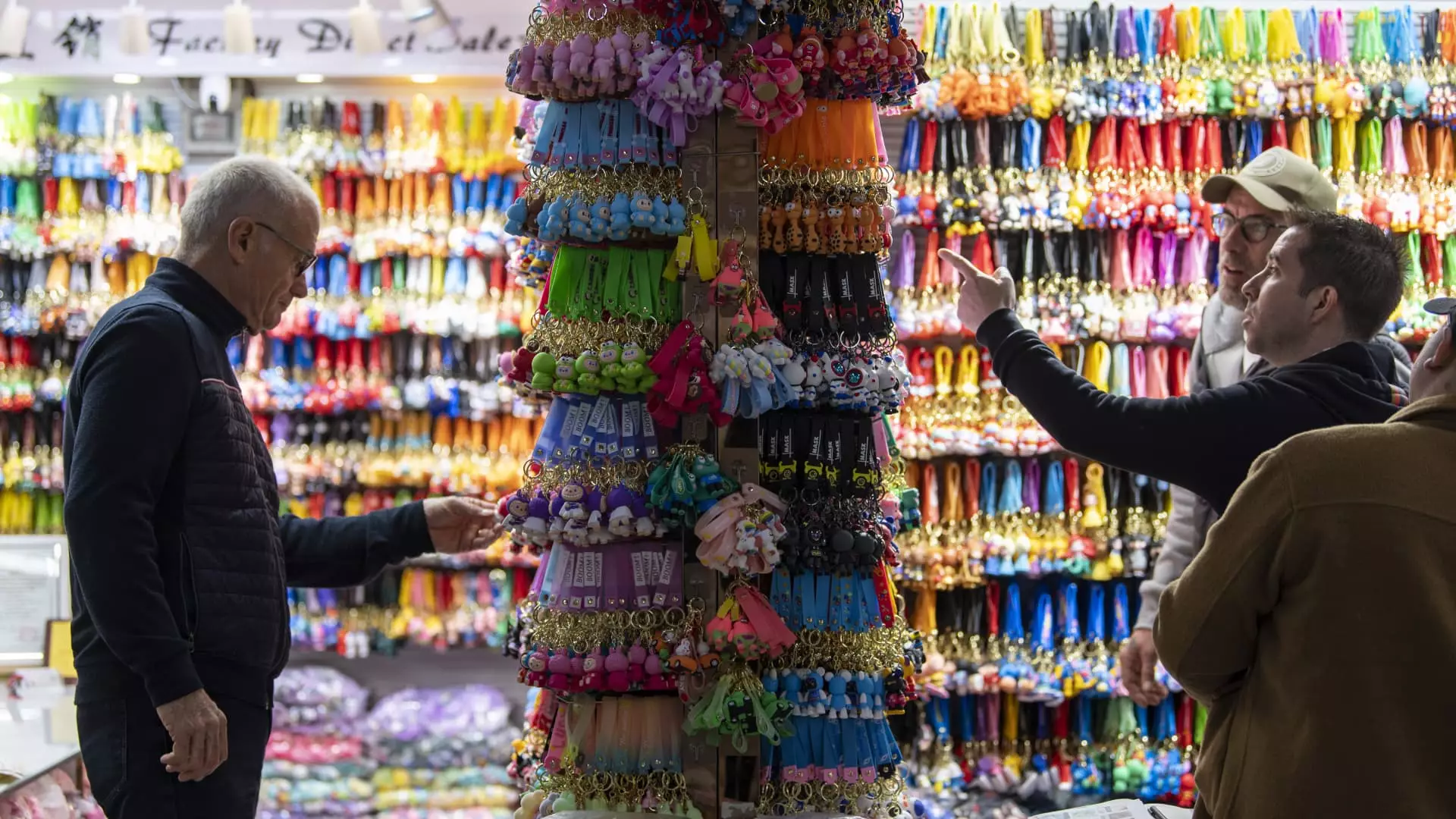As the holiday season approaches, U.S. retailers have long embraced a strategy known as “Christmas creep,” where holiday merchandise appears on store shelves earlier each year. This marketing maneuver is intended to capture consumer spending during what is undoubtedly a lucrative period for retailers. However, in recent years, this endeavor has been overshadowed by a more complex backdrop of international trade dynamics and tariff uncertainties, particularly as they relate to importing goods from China. The potential disruptions to supply chains due to these tariffs could pose significant challenges for U.S. retailers striving to meet consumer demand during the holidays.
The tariffs implemented by the Trump administration have been particularly steep, initially starting at 34% and ramping up to an alarming 145%. Such unpredictability has caused retailers to reevaluate their sourcing strategies and capacities. Insights shared by industry experts indicate a growing anxiety among retailers about missing out on prime shopping dates like Black Friday and Christmas, which could lead to a significant decrease in their bottom lines.
Supply Chain Disruptions: A Domino Effect
Among the industries affected by these tariffs, those relying on robust supply chains, such as manufacturing and electronics, are experiencing a domino effect of disruptions. Cameron Johnson, a senior partner at Tidalwave Solutions, points out the cascading impact of halted orders. For instance, a slowdown in production of seemingly simple objects like spoons can lead to broader ramifications that affect everything from steel rolling to iron ore smelting. If production cycles are interrupted, restarting these intricate supply chains presents its own set of challenges, particularly given the interdependence of various manufacturers.
The current landscape suggests that abrupt order halts may not entirely benefit retailers in the long run. In fact, reports indicate that while some production has resumed, U.S. importers are becoming acutely aware that the clock is ticking. Preparation for goods needed for the holiday season should ideally begin months earlier; yet many U.S. firms find themselves reacting rather than proactively strategizing.
Complications in Goods Importation
As the timeline for shipping becomes increasingly pressing, the recent statistics paint a concerning picture for U.S. importers from China. A notable decline in container ships departing for the United States points to a reduction in volume as manufacturers face order cancellations compounded by tariff uncertainties. As highlighted by Morgan Stanley’s data, the surge in canceled shipments underscores a growing reluctance among imports to commit to forthcoming orders.
Critical items, especially electronics, require strategic foresight to ensure they land on American shelves well before the holiday shopping begins. Renaud Anjoran, CEO of an electronics manufacturing firm, emphasizes that shipping logistics should begin as early as March to meet the November deadlines. Without adequate lead time and careful planning, the prospect of consumers finding bare shelves during peak shopping periods becomes increasingly tangible.
Retail Strategies in Uncertain Times
In light of these challenges, some retailers are innovatively hedging their bets. A strategy emerging among U.S. buyers includes stockpiling inventory in anticipation of tariffs. Early data even suggests a 9.1% uptick in Chinese exports to the U.S., showcasing that some firms are eager to fill their shelves before anticipated tariff hikes. However, as the summer months approach, the expected influx of American orders appears to be declining sharply, signaling that many retailers may be taking a cautious approach.
Moreover, some manufacturers are adopting a wait-and-see strategy, holding production until there is clearer guidance on tariff rates. This cautious behavior relates not just to financial implications, but also to the potential for subsequent order overload that could complicate logistics if tariff conditions suddenly improve.
The Road Ahead: Will Relief Come?
As the situation continues to evolve, there is emerging speculation that both the U.S. and China might seek relief from some punitive tariffs to mitigate the economic impact of their trade standoff. Certain exemptions have already been granted for vital goods ranging from aerospace components to pharmaceuticals, indicating a potential willingness from both governments to recalibrate their approach.
Despite these possible tariff adjustments on the horizon, retailers are ultimately navigating an unpredictable landscape. Many businesses are trying to maintain a delicate balance between demand and supply while being mindful of their margin pressures. As some factories receive clearance to resume production, the urgency to secure lower prices before potential cost hikes becomes a significant driving force in the decisions made by firms trying to outsmart the tangled webs of trade relationships.
While the road to the holidays may be paved with complexities, the retail industry’s resilience in the face of these trials showcases an enduring spirit. Retailers are continuously adapting, seeking innovative solutions, and preparing to meet consumer needs even amid a wave of uncertainty.

